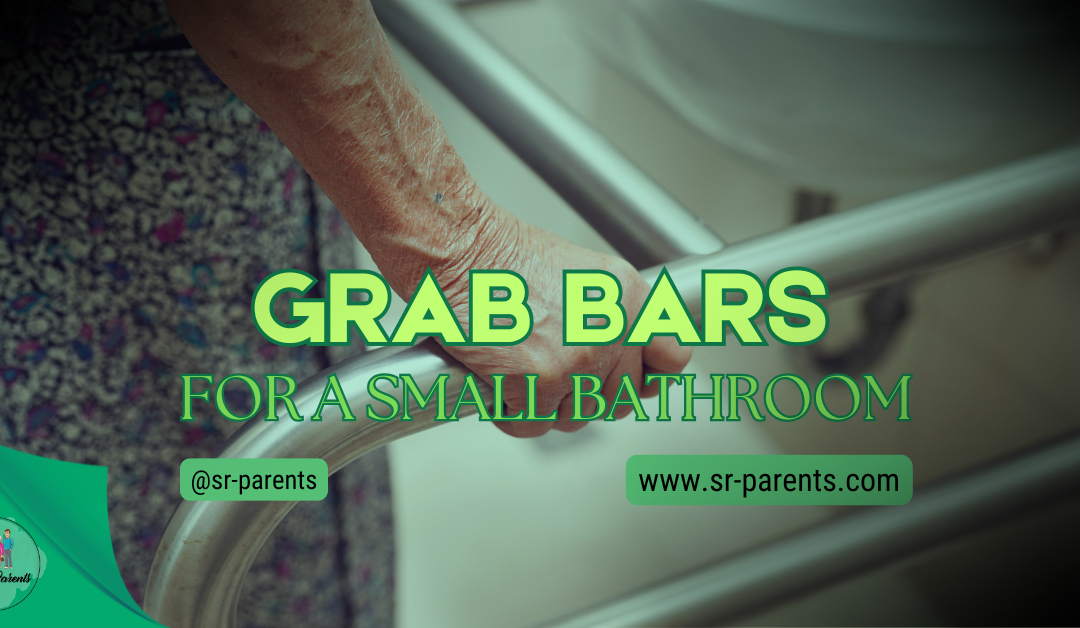Navigating a small bathroom can be challenging, especially for those with limited mobility, making grab bars for a small bathroom an essential addition. Grab bars are vital safety features that provide much-needed support and stability, ensuring a safer environment for everyone. They can also serve as stylish design elements that enhance your space, blending seamlessly with your existing decor. By integrating grab bars, you improve safety and increase your bathroom’s overall functionality. In this article, we’ll explore the benefits of incorporating grab bars into your small bathroom, focusing on their functional and aesthetic appeal.
We will discuss tips for choosing the right type and placement of grab bars to maximize safety and style. Proper installation and selection can significantly reduce the risk of falls, making them an indispensable addition. Whether you’re looking to improve accessibility for yourself or loved ones or simply want to elevate the overall look of your bathroom, grab bars can transform this essential space into a safer and more inviting oasis. Join us as we delve into the world of grab bars and discover how they can enhance your bathroom experience while providing peace of mind for you and your family.
Contents
How to Choose Grab Bars for a Bathroom with Limited Space: Maximizing Safety and Style
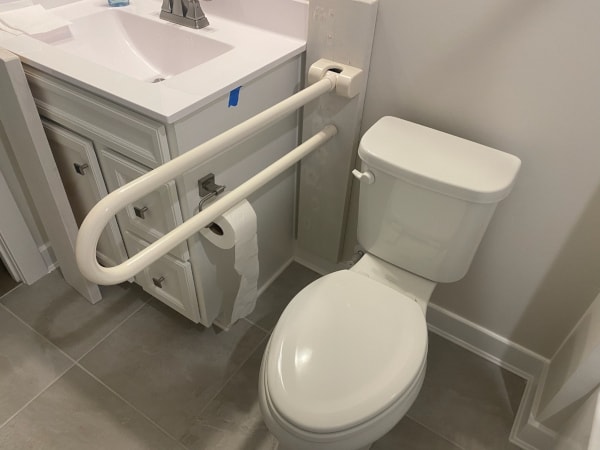
When outfitting a bathroom with limited space, choosing suitable grab bars for a small bathroom is crucial to ensure safety without compromising functionality or design. They can be both practical and aesthetically pleasing, allowing for a secure environment while enhancing the overall look of the space.
Grab bars provide essential support and stability for individuals with mobility challenges, making them a valuable addition to any bathroom. Considerations such as the layout of the room, the user’s needs, and the existing fixtures will dictate the type and placement of grab bars.
With the right approach, selecting safety features that blend seamlessly with the bathroom’s aesthetics while fulfilling their primary purpose is possible. Understanding the basics of grab bars, including their materials, dimensions, and weight capacities, is the first step in making an informed decision.
Manufacturers offer various space-saving options designed specifically for bathrooms where space is at a premium. These innovative solutions can include multifunctional grab bars that serve as towel racks or toilet paper holders, allowing for a dual purpose without additional space requirements.
The installation process is also critical, as grab bars must be adequately anchored to withstand the forces exerted upon them, necessitating expert installation in many cases.
Key Takeaways
- Grab bars enhance safety in small bathrooms, provide stability and support for individuals with limited mobility, and improve overall functionality.
- Innovative designs, such as multifunctional grab bars that double as towel racks or fold-away options, help maximize space without sacrificing safety or style.
- Ensuring grab bars are professionally installed and securely anchored is vital for their effectiveness, reducing the risk of falls and enhancing user confidence.
- Grab bars can complement bathroom decor, with various styles and finishes available to blend seamlessly into the design while maintaining their primary safety function.
- Ongoing care, including cleaning and periodic inspections for stability, ensures that grab bars remain practical and hygienic over time.
Assessing Your Bathroom Space
When choosing grab bars for a small bathroom, it is crucial to accurately evaluate the bathroom’s layout and measure the available wall space to ensure a practical and safe installation.
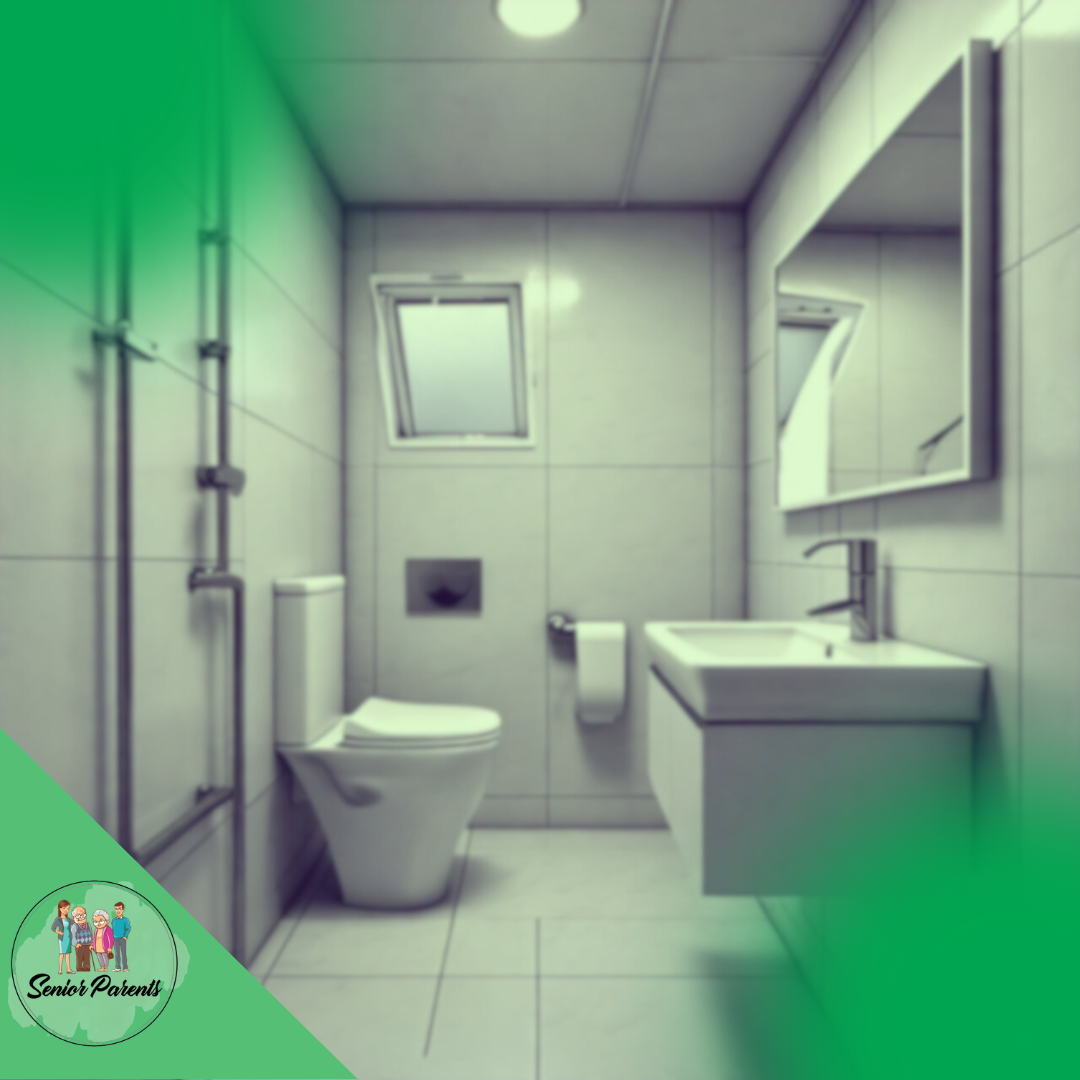
Evaluating Bathroom Layout
One should carefully examine the layout of their bathroom. Identify the areas that frequently require support, such as next to the toilet or in the shower area. In bathrooms with restricted space, floor-to-ceiling grab bars like the SuperPole might be advantageous, especially if wall mounting poses challenges.
Measuring Available Wall Space
Measuring the wall space where the grab bars will be installed is imperative. Check for length and stud locations to ensure the grab bars can be securely attached. If conventional grab bars do not fit, one might consider multifunctional grab bars that can be integrated with existing bathroom fixtures, minimizing the space required.
Understanding Grab Bar Basics
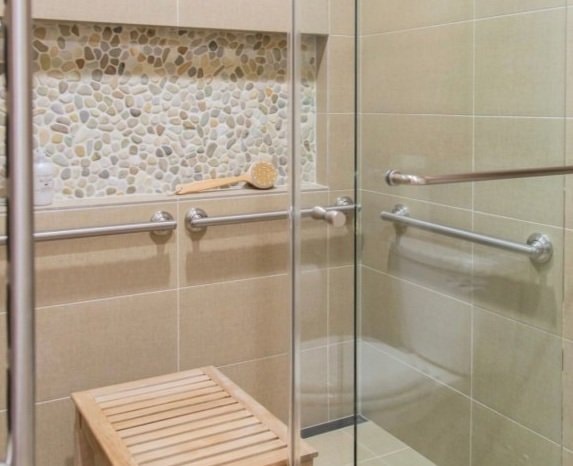
When selecting grab bars for a small bathroom, it’s crucial to consider the type and material of grab bars to ensure safety and compatibility with the space. The right grab bars can make a significant difference in providing support and preventing accidents, especially in tight quarters where every inch counts.
Types of Grab Bars
Grab bars come in various styles:
- Straight Grab Bars: These are the most common and versatile, fitting well in small and large spaces. According to Kingston Brass, straight bars should be chosen based on the bathroom space, with a smaller 12-inch grab bar suitable near a sink in confined areas.
- Wave-Style Grab Bars: They offer a twist to the straight design for added aesthetic appeal while maintaining functionality.
Material Considerations
The material of a grab bar significantly impacts its durability and grip:
- Stainless Steel: Offers high strength and corrosion resistance, commonly used in moist bathroom environments.
- Plastic: A budget-friendly option that can be satisfactory but may lack the robustness and longevity of metal alternatives.
- Brass: A corrosion-resistant metal is known for its decorative appeal but requires consistent maintenance to preserve its finish.
Space-Saving Grab Bar Options
Choosing grab bars for a small bathroom that maximizes safety without overcrowding is crucial in bathrooms with limited space. Space-saving grab bar options can be both functional and discreet, catering to the specific constraints of compact bathrooms.
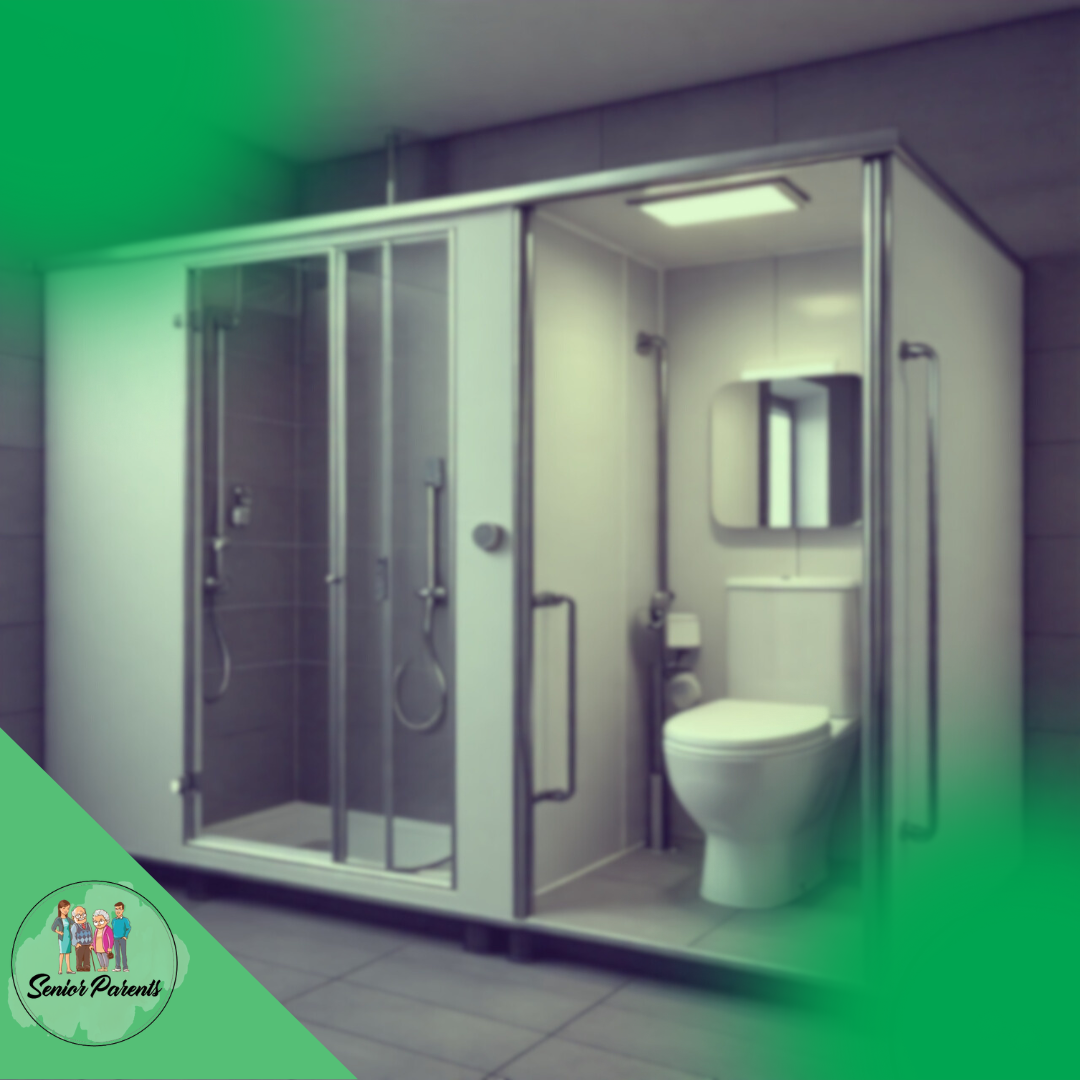
Corner Grab Bars
Corner grab bars are an efficient solution for small bathrooms, utilizing the often-underused space where two walls meet. They offer a secure grip from different angles and can be beneficial near shower seats or tight enclosures. For example, HealthCraft’s corner grab bars provide sturdy support while seamlessly fitting into the corner of a bathroom.
Fold-Away Grab Bars
Fold-away grab bars are ideal for spaces that require occasional assistance. These bars can be folded against the wall when not in use, ensuring that they don’t impede movement around the room. Their flexibility makes them suitable for use next to toilets or in shower areas where space is at a premium.
Wall-to-Floor Grab Bars
For bathrooms with scarce wall space, wall-to-floor grab bars offer a vertical solution. They run from the wall to the floor, providing a robust and steady grip that can assist users in standing up or sitting down. This design minimizes the horizontal footprint and is often used next to toilets or within shower stalls for optimal space utilization.
Check out this video on how to choose grab bars and where to place them.
By: Rob Horkheimer
Installation Considerations
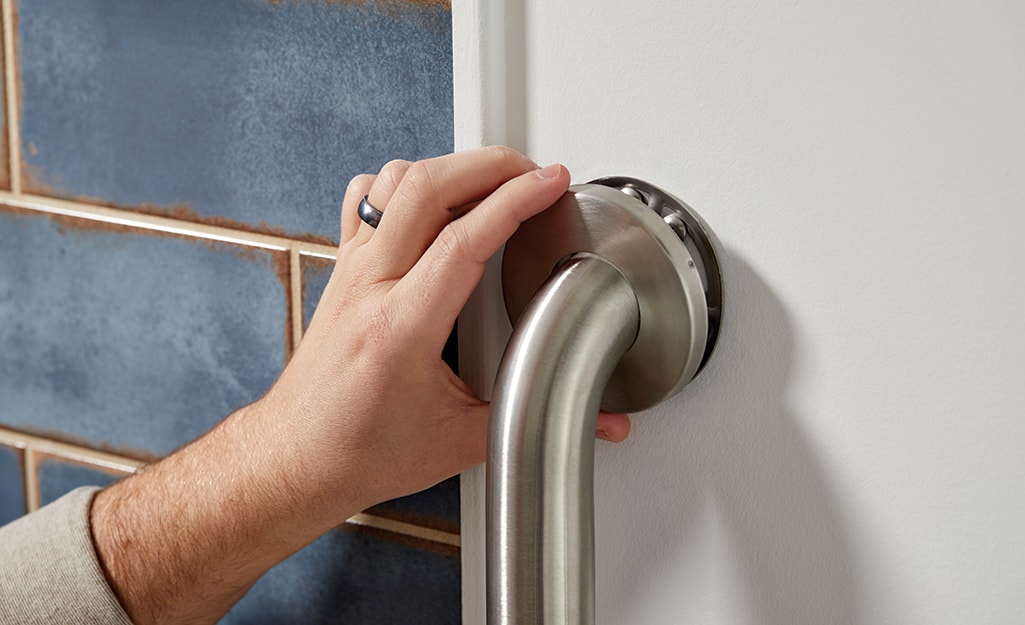
When selecting grab bars for a small bathroom, understanding the specific requirements for mounting surfaces and acknowledging the importance of weight support and safety is crucial.
Mounting Surfaces
For bathrooms with limited space, it is important to identify sturdy mounting surfaces for grab bar installation. Sheetrock or drywall alone may not provide adequate support, necessitating studs for secure attachment or the assistance of wall anchors.
A high-quality anchor system allows for installation on various wall types, including those with tile or fiberglass overlays.
Weight Capacity and Safety
The safety of grab bars relies heavily on their weight capacity. Bars must be capable of supporting the intended user’s weight; typically, this means choosing products that can support at least 250 pounds. The product’s weight capacity should be clearly verified before purchase and installation.
Moreover, proper placement according to user need is vital, with an emphasis on accommodating the user’s height and reach to enhance the utility of the grab bars in a constrained space.
Aesthetic Integration
When choosing grab bars for a small bathroom, it’s crucial to ensure safety and maintain the room’s design integrity.
Grab Bar Styles
One must select a style that complements the bathroom’s design theme. The minimalist lines of straight grab bars may be preferable for modern and sleek aesthetics. In contrast, bathrooms with more classic decor can benefit from the subtle curves of traditional grab bar designs.
For example, Designer Grab Bars come in a variety of styles, allowing them to blend with the existing decor and enhance the bathroom’s overall appeal.
Color and Finish
The color and finish of grab bars should align with the other fixtures in the bathroom. Stainless steel is a versatile option that lends a clean, contemporary feel, while oil-rubbed bronze can offer an air of luxury and warmth suitable for traditional spaces. Matching the finish with other metals in the bathroom is important for a cohesive look.
For specific material examples, Stainless steel and bronze grab bars are contrasting options that can affect the aesthetic in different ways, depending on the existing colors and tones of the bathroom.
Did You Know?
To maintain an aesthetic appeal in a bathroom with limited space, one can consider grab bars that double as bathroom fixtures, such as towel racks or toilet paper holders. Choosing finishes that complement the existing decor is essential. Additionally, carefully planned placement can integrate grab bars seamlessly into the design.
Legal and Compliance Standards

When choosing grab bars for a small bathroom, it is crucial to adhere to legal and regulatory standards to ensure safety and inclusivity.
ADA Guidelines
The Americans with Disabilities Act (ADA) provides specific requirements for grab bars to accommodate individuals with disabilities. The ADA guidelines indicate grab bars should have a diameter of 1.25 to 1.5 inches and be positioned 1.5 to 2 inches from the wall.
In terms of height, ADA-compliant grab bar height varies for adults and children, with the aim of enhancing safety and providing necessary support.
Local Building Codes
Local building codes may have additional or modified requirements tailored to the region’s regulations. Builders and homeowners should check for local amendments to ADA guidelines, often available through city or county building regulation offices.
Compliance with both ADA guidelines and local building codes is necessary to avoid legal complications and to foster safe usage by all individuals.
Maintenance and Care
Proper maintenance and care are crucial for the longevity and effectiveness of grab bars for a small bathroom. It ensures that these safety features remain sturdy and hygienic for daily use.
Cleaning Routines
To keep grab bars free from bacteria and slippery residues, they should be cleaned regularly.
- Wiping daily: Use a soft cloth and a mild, non-abrasive cleaner.
- Weekly deep cleaning: Apply a disinfectant to tackle germs, followed by thorough rinsing and drying to prevent rust on metal grab bars.
Regular Inspections
Grab bars require routine inspections to ensure their stability and safety.
- Checking for looseness: Test the grab bar monthly by applying slight pressure. If there is any give, it needs immediate attention.
- Examining for wear: Look for any signs of corrosion or wear that could weaken the grab bar’s integrity. Rust or metal fatigue on a grab bar indicates it’s time for a replacement.
Professional Consultation
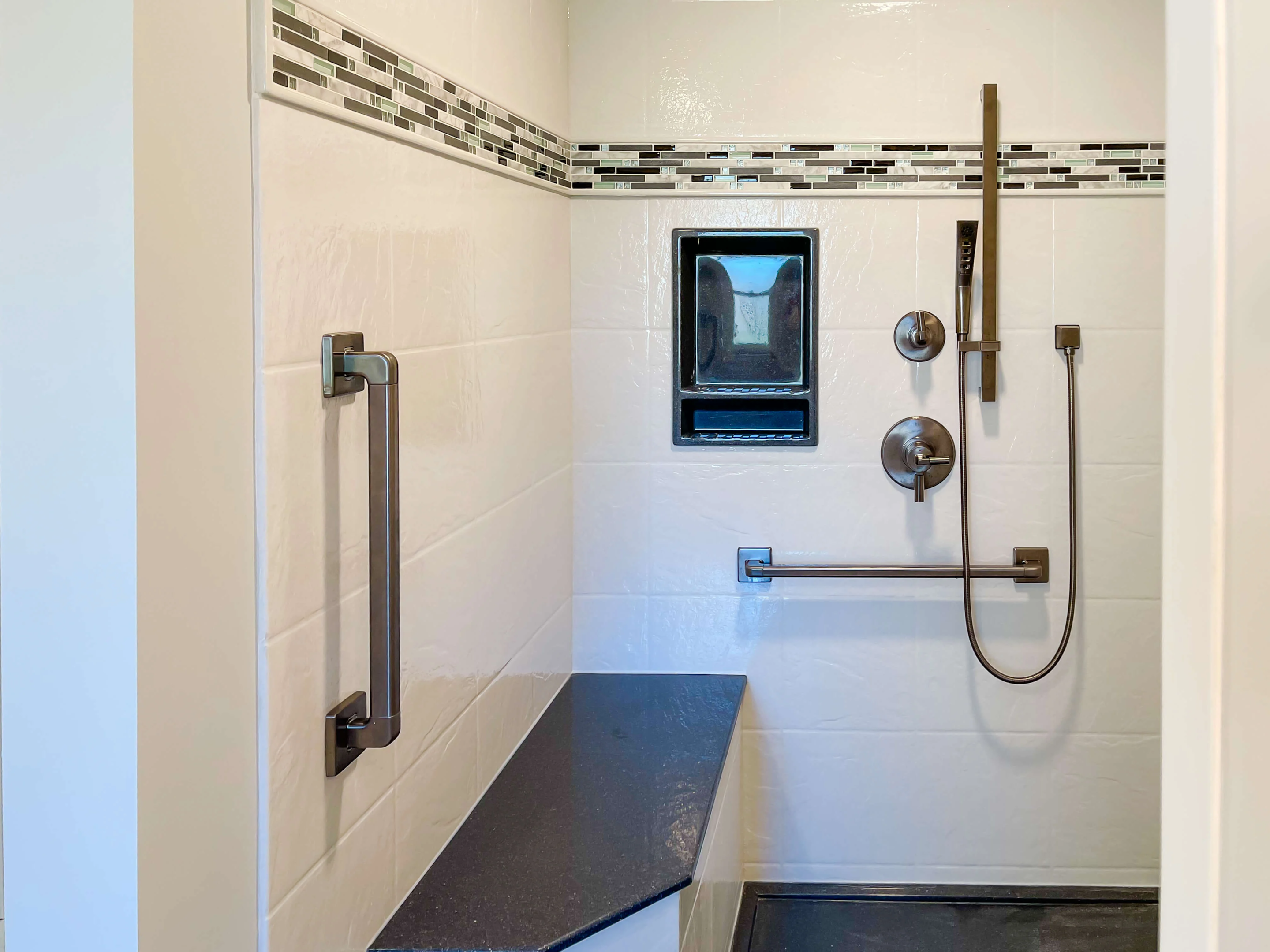
Choosing grab bars for a small bathroom requires professional insight to ensure both safety and functionality.
Hiring Experienced Installers
It is critical to engage installers with a proven track record of working in small spaces.
- Assessment: Detailed analysis of the bathroom structure.
- Placement: Strategic positioning for maximum efficiency and safety.
- Installation: Secure fitting with appropriate hardware to ensure durability.
Mr. Grab Bar is one example of a company that might provide such specialized installation services.
Accessibility Experts
Consulting with accessibility experts who understand the nuances of building codes and Americans with Disabilities Act (ADA) requirements is of utmost importance.
- Expertise: In-depth knowledge of legal guidelines and ergonomic design.
- Personalization: Customized solutions catering to individual user needs.
- Aesthetics: A focus on selecting grab bars that complement the bathroom’s decor.
The input from Forbes Health presents examples of how choosing the right grab bars makes a significant difference in a safely equipped home.
Check out this video on grab bars for a toilet.
By: Bathroom Remodeling Teacher

Enhancing Safety and Style: The Essential Guide to Grab Bars for Small Bathrooms
Incorporating grab bars for a small bathroom not only enhances safety but also elevates the overall design and functionality of the space. By strategically selecting and placing grab bars, individuals can create a safer environment that caters to mobility needs without compromising on style. These versatile fixtures can blend seamlessly into the bathroom decor, offering support while doubling as functional elements like towel racks or toilet paper holders. With various innovative designs available, homeowners can enjoy the peace of mind that comes with improved safety, knowing that their bathroom is equipped to handle the needs of all users.
Ultimately, the thoughtful integration of grab bars contributes to a more accessible and inviting bathroom. By understanding the basics of grab bar selection, installation, and maintenance, one can ensure that these essential features remain both effective and aesthetically pleasing over time. With professional consultation and proper planning, the addition of grab bars can transform a small bathroom into a secure and stylish sanctuary that accommodates everyone’s needs. Embracing these safety measures is an essential step toward creating a welcoming environment, allowing families to enjoy their bathrooms confidently.
Frequently Asked Questions
What Should Be Considered When Selecting Grab Bars for a Small Bathroom?
When selecting grab bars for a small bathroom, one should consider the bar’s length, diameter, and weight capacity, as well as the user’s specific needs. Space constraints necessitate efficient use of available wall areas without compromising safety.
What Are the Best Locations for Installing Grab Bars in a Compact Bathroom Layout?
In a compact bathroom layout, grab bars should be installed where they can be easily reached, such as beside the toilet and within the shower or tub area. The placement must support natural and safe movements, taking care not to obstruct doors or fixtures.
How Can I Determine the Appropriate Number of Grab Bars Needed for a Safe and Functional Bathroom?
The number of grab bars required depends on the user’s mobility levels and the bathroom’s specific dimensions. A professional assessment can help determine the safest configuration, which often includes at least one bar by the toilet and one or two in the shower area.
Can You Provide Guidance on the Safe Installation of Grab Bars in Bathrooms Designed for Elderly Use?
For bathrooms designed for elderly use, grab bars should be securely installed at standard heights—34 to 38 inches for horizontal bars and around 36 inches for vertical bars near the toilet. The bars should be anchored to wall studs or reinforced with appropriate backing to ensure they can support the intended weight.
What Are the Critical Differences Between Grab Bars and Assist Bars for Bathroom Safety?
Grab bars are robust safety devices specifically designed to support a significant amount of weight, while assist bars may offer less structural support and are intended for balance rather than full body weight. It’s crucial to install true grab bars in a bathroom to provide reliable safety.
Stay Updated with the Latest in Senior Care
Ready to begin a journey of compassion and expertise? Follow us on social media for heartwarming stories, expert insights, and valuable tips on caring for seniors!
? Website: Head to sr-parents.com for in-depth articles and resources on senior care, health, and wellness.
? Pinterest: Discover a wealth of caregiving ideas, home solutions, and senior-friendly activities at pinterest.com/seniorparents.
? Facebook: Join our caring community at facebook.com/sr.parents. Connect with other caregivers, share your experiences, and find inspiration.
? Twitter: Follow us on twitter.com/senior_parents for timely updates, news, and trending conversations on senior care.
? Instagram: Visit instagram.com/seniorparents for uplifting moments, caregiving advice, and a closer look into the lives of seniors and their families.
Stay informed, inspired, and supported with our latest articles and heartwarming senior care stories.

